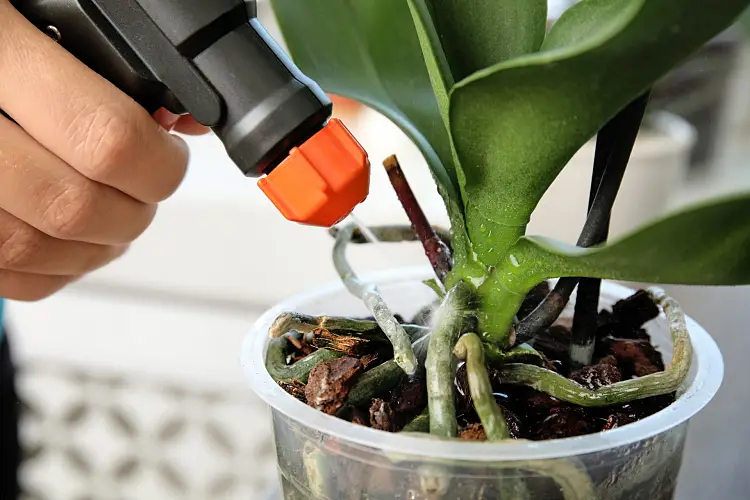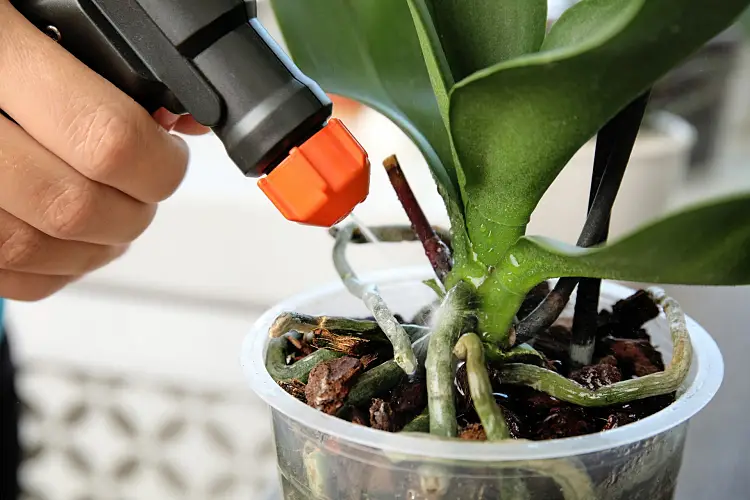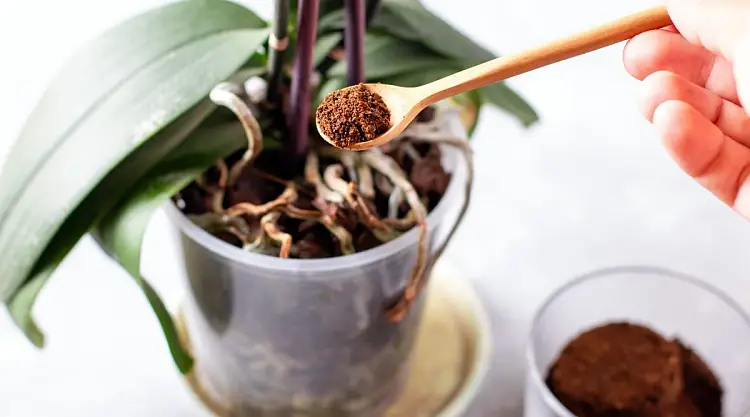Orchids are mostly plants that do not grow in soil. So the question arises about the effectiveness of fertilizing with all kinds of household products, such as coffee, milk or cut bananas. Experts say that a good natural fertilizer should be water-based without solids and well-fermented for immediate nutrient uptake. Know that it is a myth to put coffee or eggshells in your orchid’s jar. It will not be able to absorb these nutrients because it is a very special flower.
The natural version is much more effective and is yeast orchid fertilizer. Yeast is the most effective natural fertilizer that contains many B vitamins. The perfect balance of these substances promotes the growth of plant roots, making them stronger and easier to transplant.
What is a good natural fertilizer for orchids?
Natural fertilization a bit more complicated than simply dumping an organic matter into the soil of plants. This requires a holistic ecosystem with healthy communities of microorganisms, the right temperature, moisture and time to break down the large nutrient molecules in organic matter into smaller chemical molecules before they can be absorbed by the plant’s roots. The principle of organic fertilization is to feed the soil rather than the plants.
Microbes in the soil can take 3 weeks to a few months to metabolize large molecules of organic matter such as protein into smaller molecules. But because orchids do not grow in soil, the way to naturally fertilize epiphytic orchids should not be aimed at feeding the soil for release. On the contrary, immediate release of nutrients is necessary. In addition, what makes natural fertilization more difficult for orchid growers is the approach that most orchids are grown indoors is not natural to its original habitat. This includes:
growing potted orchids
Growing orchids in the home
Growing orchids in a medium of moss and bark
rinsing or soaking orchids periodically to prevent salt buildup on the roots
change the environment every 2 years to prevent decay and root rot
Yeast orchid fertilizer: the recipe
A good natural fertilizer suitable for growing orchids indoors should be water-based to facilitate the rapid release of nutrients. Follow these notes to prepare the recipe for yeast dressing:
1 kilogram of yeast diluted in 5 liters of water.
Dilute the solution with water in the ratio 1: 10 before use.
If you have dry yeast instead of the usual yeast:
Count 10 grams per 10 l of warm water.
Add two tablespoons of sugar
Let the mixture stand for a few hours.
Usually, this solution is used to water flower beds, vegetables, fruit trees and berry and orchid shrubs.
Myths about natural fertilizers for orchids
There is nothing wrong with fertilizing plants naturally, as natural fertilizers work well for plants. But many people make it sound too simplistic. Below, I will tell you about the problems with some myths of these commonly recommended natural fertilizers to avoid orchid maintenance mistakes.
Coffee: The use of coffee to fertilize orchids is one of the main myths. Coffee works well as a fertilizer for garden plants with soil. But not really for indoor orchids. Are coffee grounds good for indoor plants? Especially for fertilizing orchids this poses several problems. It can clog the foam medium, reducing airflow to the roots and thus increasing the risk of root rot.
In addition, coffee grounds take a long time for the protein to be broken down by microbes and release its nitrogen for root uptake. Again, epiphytic orchids do not grow in soil, so it is questionable whether there are enough microbes, if at all, around the roots to break down the nitrogen. Coffee grounds can also attract midges and decaying pests.
Eggshells: There are recommendations for cooking eggshells, grinding them into a powder and then spraying them on orchid leaves or applying them directly to the substrate. The claim is that burnt eggshells provide orchids with calcium phosphate. The problem is very similar to that of coffee grounds. Eggshell powder can clog the medium of the orchid, reducing airflow to the roots. And applying eggshell powder to leaves will not work, because the protein molecule is too large to pass through the leaves’ tiny pores. So, beware of the myths.



